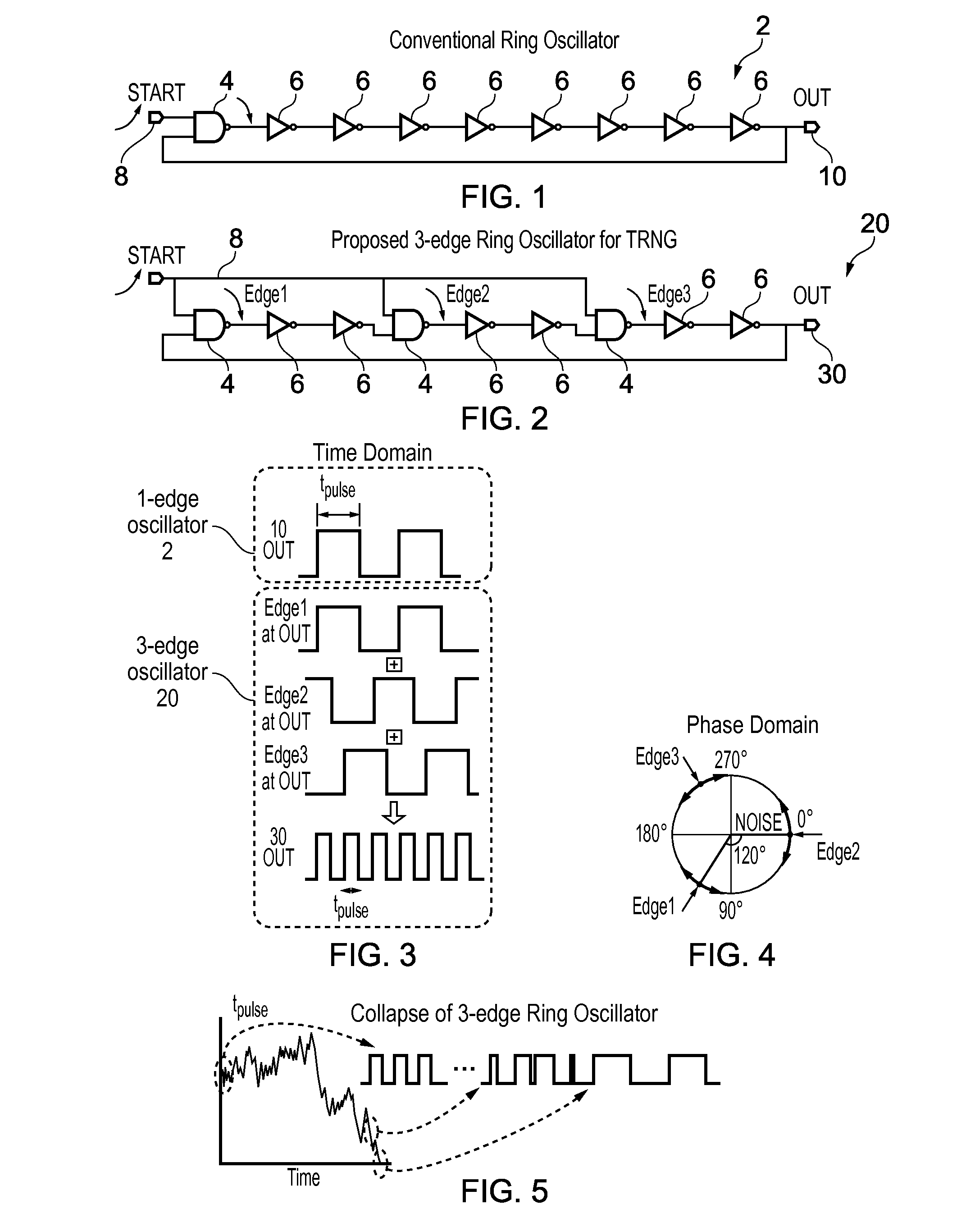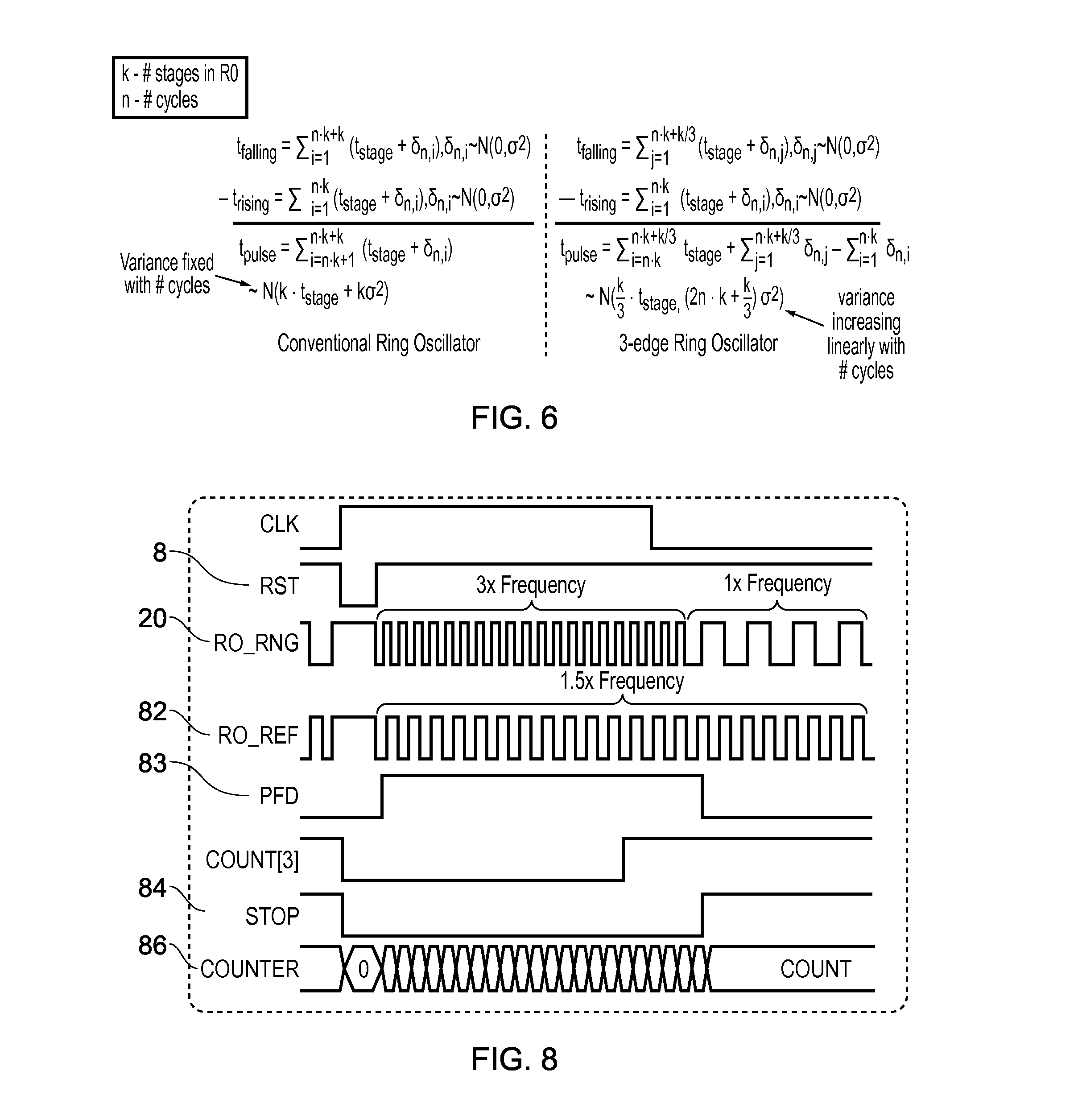True random number generator
- Summary
- Abstract
- Description
- Claims
- Application Information
AI Technical Summary
Benefits of technology
Problems solved by technology
Method used
Image
Examples
Embodiment Construction
[0048]FIG. 1 illustrates a conventional ring oscillator 2 having an odd number of inverter stages 4, 6. One of the inverter stages is an input inverter stage 4 in the form of a NAND gate which receives an output of an earlier inverter stage 6 and a start signal 8. After a reset of the oscillator 2, both inputs of the NAND gate 4 are at logical 0 and so the output of the NAND gate is at logical 1. When the start signal 8 rises to logical 1 then the NAND gate 4 falls down and this injects an edge into the ring oscillator which then propagates around the ring oscillator. As each inverter stage 6 has an associated delay then the edge takes some time to propagate around the ring. As there is an odd number of inverter stages, the signal at an output node 10 appears as a series of pulses having a given oscillator frequency, as shown in the top part of FIG. 3.
[0049]FIG. 2 illustrates a ring oscillator 20 according to the present technique. Unlike the conventional ring oscillator, in the rin...
PUM
 Login to View More
Login to View More Abstract
Description
Claims
Application Information
 Login to View More
Login to View More - R&D
- Intellectual Property
- Life Sciences
- Materials
- Tech Scout
- Unparalleled Data Quality
- Higher Quality Content
- 60% Fewer Hallucinations
Browse by: Latest US Patents, China's latest patents, Technical Efficacy Thesaurus, Application Domain, Technology Topic, Popular Technical Reports.
© 2025 PatSnap. All rights reserved.Legal|Privacy policy|Modern Slavery Act Transparency Statement|Sitemap|About US| Contact US: help@patsnap.com



